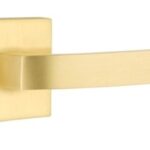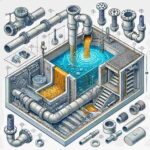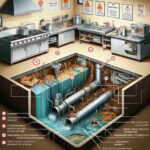How Emtek Door Levers Are Engineered for Optimal Performance and Durability
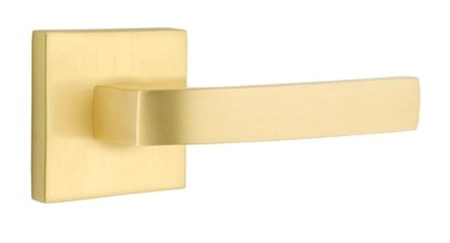
When it comes to home upgrades and renovations, the door hardware you choose can make a big difference in the overall look and feel of your space. Door levers, in particular, are an essential component that needs to be both functional and aesthetically pleasing. One brand that has built a reputation for engineering high-quality, durable door levers is Emtek.
In this article, we’ll take a closer look at the engineering principles and manufacturing processes that go into Emtek door levers, so you can understand why they are a top choice for homeowners seeking optimal performance and long-lasting quality.
Precision Engineering for Smooth Operation
At the heart of any well-designed door lever is the internal mechanism that allows it to operate smoothly and reliably. Emtek’s engineers put a great deal of thought and attention to detail into the mechanical components of their door levers.
The key focus areas are:
Bearing Design: The pivot points where the lever attaches to the door require high-quality bearings that can withstand extensive use without developing play or “looseness” over time. Emtek uses precision-machined bearings made from durable materials like stainless steel to ensure smooth, effortless lever operation for years to come.
Gear Train Optimization: For door levers that incorporate a locking mechanism, the gear train that translates the lever motion into locking/unlocking the door needs to be engineered with tight tolerances. Emtek’s gear trains are designed to provide a reassuring, tactile feel when engaging the lock, without any binding or grinding noises.
Ergonomic Lever Design: The shape and contour of the lever itself are also an important consideration. Emtek designs their levers with an ergonomic grip that feels comfortable and natural in the hand, reducing the effort required to operate the door. The lever throw (how far it needs to be rotated) is also optimized for ease of use.
By sweating the small details in the mechanical design, Emtek is able to deliver door levers that feel high-quality and provide a satisfying user experience, day in and day out.
Durable Materials for Long-Lasting Performance
Of course, precision engineering alone is not enough – the materials used in the construction of Emtek door levers also play a critical role in their overall durability and longevity.
Solid Brass Construction: Many Emtek door levers are made from solid brass, which is renowned for its strength, corrosion resistance, and ability to retain a beautiful finish over time. Brass is an alloy composed primarily of copper and zinc, making it an ideal material for high-use hardware that needs to withstand daily wear and tear.
Stainless Steel Components: In addition to the brass exterior, Emtek also uses stainless steel for critical internal components like the pivot pins, gear train, and locking mechanism. Stainless steel is an exceptionally durable metal that resists corrosion and wear, ensuring smooth, reliable operation even after years of use.
Sealed Bearings: As mentioned earlier, the pivot points in Emtek door levers feature high-quality bearings. But these bearings are also sealed to protect them from the intrusion of dirt, dust, and moisture – all of which can degrade bearing performance over time. This sealed design helps maintain the lever’s smooth feel and responsiveness.
Durable Finishes: The final layer of protection comes in the form of Emtek’s finish options. Their door levers are available in a wide range of elegant finishes, including polished chrome, satin nickel, oil-rubbed bronze, and more. These finishes are applied using multi-step processes that result in a durable, scratch-resistant coating that maintains its luster.
By thoughtfully selecting and integrating these high-quality materials, Emtek can engineer door levers that can withstand the rigors of daily use in residential and light commercial environments.
Testing and Quality Assurance
Of course, great engineering and materials are only half the battle – robust testing and quality assurance processes are also crucial to ensuring Emtek door levers perform as expected. The company has invested heavily in this area to give homeowners peace of mind.
Mechanical Durability Testing: Emtek door levers are put through extensive cycle testing, where they are operated thousands of times to simulate years of real-world use. This allows the engineers to identify and address any weak points in the design before the products hit the market.
Finish Durability Testing: Similarly, Emtek’s finishes undergo rigorous testing to ensure they can withstand exposure to sunlight, moisture, cleaning chemicals, and other environmental factors without fading, peeling, or corroding. This includes accelerated weathering tests that compress years of use into a matter of weeks.
Quality Control Inspections: During the manufacturing process, Emtek employs stringent quality control measures to catch any defects or inconsistencies. This includes 100% inspection of critical components, as well as random sampling of finished products to verify they meet the company’s high standards.
Third-Party Certifications: To further validate the quality and performance of their door levers, Emtek seeks out third-party certifications from organizations like ANSI (American National Standards Institute) and UL (Underwriters Laboratories). These certifications provide an extra layer of assurance for homeowners.
By combining rigorous engineering, high-quality materials, and meticulous testing, Emtek can deliver door levers that not only look beautiful but also provide reliable, long-lasting performance. This commitment to quality is a key reason why Emtek door levers are a popular choice among homeowners.
Aesthetic Versatility
While the engineering and durability of Emtek door levers are certainly impressive, it’s important to note that they also offer a wide range of aesthetic options to complement any home’s style. This versatility allows homeowners to find the perfect Emtek door lever that fits their desired look and feel.
Emtek’s door lever designs span a spectrum from classic and traditional to modern and minimalist. Homeowners can choose from a variety of shapes, sizes, and finishes, including:
Sleek, streamlined profiles in polished chrome or satin nickel
Ornate, decorative designs in oil-rubbed bronze or antique brass
Lever styles that evoke a vintage or industrial vibe
Customizable options to match other hardware in the home
This expansive selection ensures that Emtek door levers can seamlessly integrate with a wide range of architectural styles, from historic Victorian homes to contemporary farmhouses. Homeowners can use Emtek door levers as a statement piece to anchor the look of a room, or as a subtle, complementary accent that ties the overall aesthetic together.
Regardless of the specific style chosen, Emtek door levers are engineered to the same high standards of performance and durability. This allows homeowners to enjoy both form and function without having to compromise on either.
Conclusion
In conclusion, Emtek door levers are engineered with a keen focus on optimal performance and long-lasting durability. From the precision-engineered internal mechanisms to the use of high-quality materials and rigorous testing protocols, Emtek has put a great deal of thought and care into the design and manufacture of its door hardware products.
Couple this engineering excellence with Emtek’s wide range of aesthetic options, and it’s easy to see why their door levers are a popular choice among homeowners seeking both style and substance. By investing in Emtek door levers, homeowners can enjoy smooth, reliable operation and a beautiful, durable hardware solution that will stand the test of time.
Septic Tanks: Myths Vs. Facts About Septic Maintenance
If you’re a homeowner in Houston, Texas, and rely on a septic system, chances are you’ve heard all kinds of advice about septic tank maintenance. Some of it’s solid, while other bits may have you scratching your head. Septic systems may not be the most glamorous part of homeownership, but maintaining them is critical to avoid costly repairs and unpleasant backups.
In this post, we’re diving into some of the most common myths about septic tanks—and, more importantly, debunking them with solid facts. Whether you’re new to septic systems or just looking for a refresher, this guide will help you make sense of septic tank cleaning in Houston, Texas, so you can keep your system running smoothly for years to come.
Myth #1: Septic Tanks Don’t Need to Be Pumped Regularly
Fact: Septic tanks do need regular cleaning.
One of the most persistent myths out there is that septic tanks are “set it and forget it” systems. While it would be nice if your septic tank could manage itself forever, the reality is it needs regular maintenance—especially cleaning. Over time, solid waste settles at the bottom of the tank and forms sludge. If not removed, this sludge can cause blockages or even force waste back into your home. Trust me, that’s not something you want to deal with on a hot Houston summer day.
Experts recommend that you schedule septic tank cleaning in Houston, Texas, every 3-5 years, depending on the size of your tank and the number of people in your household. According to the EPA, repairs or replacements for failing septic systems can cost anywhere between $3,000 to $7,000, making regular maintenance a small price to pay for avoiding bigger problems down the road.
Myth #2: It’s Fine to Use Chemical Additives to Clean Your Septic Tank
Fact: Chemical additives can do more harm than good.
It’s easy to think that throwing a little chemical cleaner into your septic system might save you the hassle of professional septic tank waste removal in Houston, Texas. However, these additives can disrupt the natural bacterial balance in your tank that’s essential for breaking down waste. Without these bacteria doing their job, your system can fail.
In fact, studies show that the use of chemicals can lead to premature septic system failure, which costs homeowners in the U.S. over $1 billion annually. Stick with regular pumpings and avoid the temptation to use “quick fix” chemicals. Your wallet and your septic tank will thank you later.
Myth #3: Flushing Everything Down the Toilet Won’t Hurt
Fact: Only flush toilet paper and human waste.
We get it—flushing things like wipes, feminine hygiene products, or even leftover food might seem harmless. Out of sight, out of mind, right? Wrong! Septic systems are designed to handle specific materials: namely, toilet paper and human waste. Anything else—yes, even those “flushable” wipes—can cause clogs and disrupt the delicate balance in your tank.
Think of it like this: If it didn’t come from you or the toilet paper roll, it doesn’t belong in your septic tank. In Houston, where humid conditions can worsen septic problems, being careful about what you flush is even more important.
Myth #4: Septic Tanks Last Forever
Fact: With proper maintenance, your septic tank can last decades—but not forever.
Septic tanks are built to be durable, but nothing lasts forever. Most septic systems, when properly maintained, can function for 20 to 30 years. However, regular septic system cleaning in Houston, Texas, is essential to keep things running smoothly.
Local Houston regulations require septic system inspections at least every five years, reinforcing the importance of regular maintenance. Ignoring routine tasks like pumping and inspections can lead to failures that will shorten your system’s lifespan and potentially cost thousands in repairs or replacements.
Myth #5: You Can Park or Build Over Your Septic Tank
Fact: Never park or build over your septic system.
This one’s a big no-no. Your septic system isn’t just a hole in the ground; it’s a delicate structure that needs room to breathe (well, sort of). Parking a vehicle or building a structure over your septic tank or drain field can compress the soil, damaging your tank and pipes. This can lead to leaks, backups, and even complete system failure.
Instead, consider septic-friendly landscaping for areas near your system. Avoid deep-rooted plants, trees, and shrubs that can interfere with your septic system. Opt for shallow-rooted plants like grass or flowers that won’t damage the pipes. In the Houston climate, plants like Mexican Feathergrass or Texas Sage can thrive without putting your system at risk.
Myth #6: You’ll Know When Your Septic Tank Is Full
Fact: By the time you notice, it’s often too late.
Waiting for obvious signs—like slow drains, bad smells, or water pooling in your yard—is not a great strategy for septic tank maintenance. By the time these symptoms show up, your septic tank could already be full, or worse, failing.
Regular inspections and cleanings are the key to staying ahead of any problems. A trusted provider of septic tank cleaning in Houston, Texas, can help you create a maintenance schedule that keeps your system in tip-top shape. Following local guidelines and getting your system inspected every few years will help prevent a nasty surprise.

Myth #7: Septic Tanks Are Bad for the Environment
Fact: Properly maintained septic systems are environmentally friendly.
Some homeowners believe that septic systems are inherently bad for the environment, but that’s simply not true—if they’re well-maintained. When functioning correctly, septic systems use natural processes to treat wastewater. This helps to protect local water sources and ecosystems from contamination.
A study by the Texas On-Site Wastewater Treatment Research Council found that septic systems in Texas, when properly maintained, contribute to clean groundwater and prevent pollution. On the flip side, a neglected system can leak harmful bacteria and chemicals into the soil and groundwater. The environmentally responsible thing to do is stay on top of your maintenance routine.
Bonus Tip: Water Conservation and Septic Systems
Did you know that conserving water can actually help prolong the life of your septic system? Septic systems are designed to handle a certain amount of wastewater daily. Reducing water usage in your home helps reduce the strain on your septic system, allowing it to treat and process wastewater more efficiently.
Simple steps like fixing leaky faucets, using water-efficient fixtures, and spreading out laundry loads can make a big difference. In a city like Houston, where heavy rainfall can already place stress on your system, water conservation is a smart move to keep things running smoothly.
The Bottom Line: Stay On Top of Septic Tank Maintenance
There’s no doubt that septic tank maintenance can feel like one of those out-of-sight, out-of-mind tasks. But trusting in myths can quickly turn minor maintenance issues into major repairs.
By sticking to the facts—such as scheduling regular septic system cleaning in Houston, Texas, and avoiding harmful practices—you’ll save yourself headaches and keep your septic tank in great shape for years to come. If you’re in the Houston area, connecting with a local professional for septic tank waste removal in Houston, Texas, is your best bet for reliable and efficient service.
So, what’s next? Make sure your septic system gets the TLC it deserves. You don’t want to wait for something to go wrong to take action—trust me, when septic systems go wrong, they go really wrong.
Need help with your septic tank maintenance? Reach out to a trusted provider of septic tank cleaning in Houston, Texas, and get ahead of the game. Your future self will thank you.
Why is My Grease Trap Smelling? Common Issues and Preventative Measures
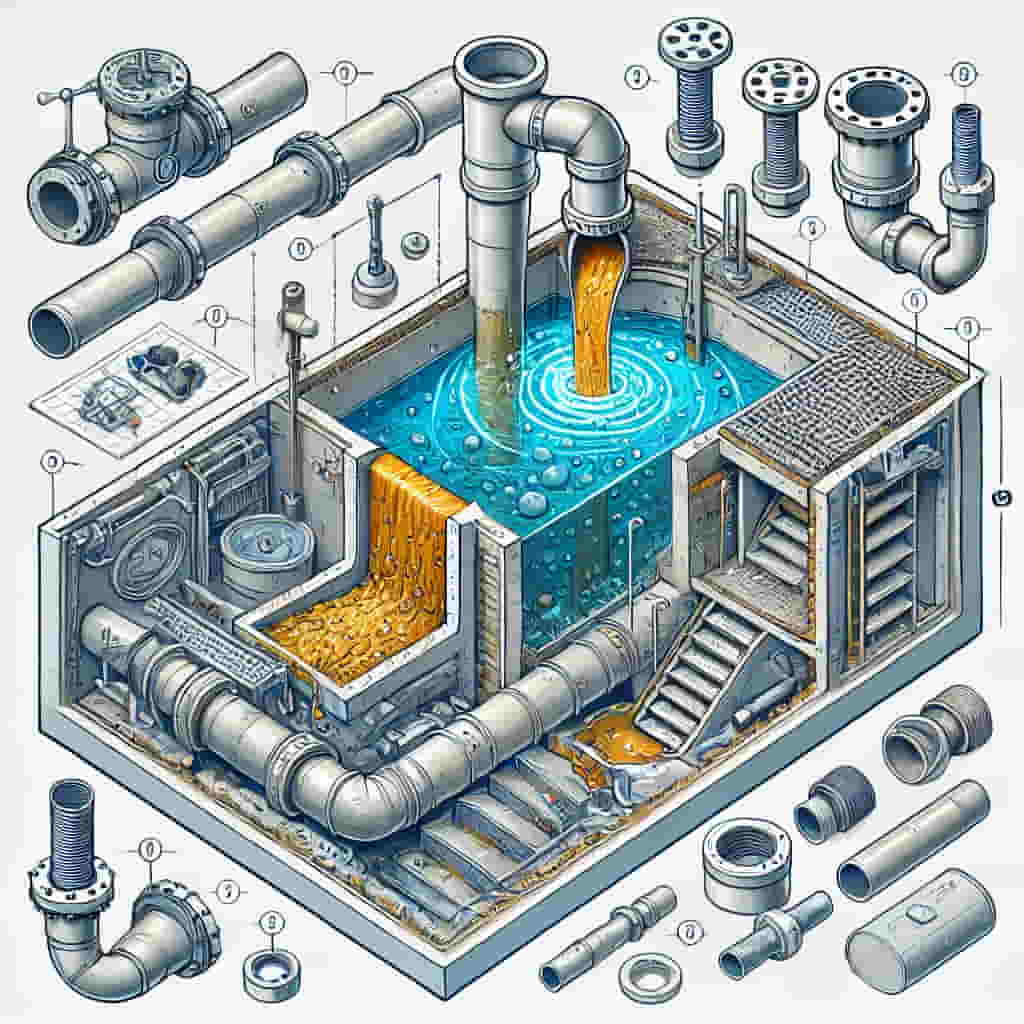
Running a restaurant is no small feat. You’re juggling food quality, customer service, staff management, and, let’s face it, a seemingly endless list of operational concerns. Among these, there’s one unsung hero (or villain, depending on the day) lurking in the back: the grease trap. If your grease trap is beginning to smell like something crawled in and died—well, it’s time to address the issue before it becomes a full-blown crisis. Let’s dive into why your grease trap might be smelling and how you can prevent it from turning your kitchen into a stinky mess.
The Not-So-Sweet Symphony of a Smelly Grease Trap
If you’ve noticed a less-than-appetizing odor wafting from your kitchen, it’s probably your grease trap sounding the alarm. A grease trap’s primary job is to intercept fats, oils, and grease (often referred to as FOG) before they enter the wastewater system. When functioning properly, it quietly collects grease, allowing water to flow through without any issues. But when it starts to smell, it’s like an unwelcome guest who overstays their welcome.
Why Does the Smell Happen?
The stench emanating from your grease trap is likely due to a combination of factors:
- Grease Buildup: Over time, the grease in your trap will accumulate. As it breaks down, it produces sulfuric compounds and fatty acids. These are the culprits behind that rotten egg smell that’s enough to make your eyes water.
- Improper Maintenance: Just like any other equipment in your restaurant, a grease trap requires regular grease trap cleaning. Skipping or delaying cleanings allows grease to build up and can lead to blockages. If left unchecked, it will not only smell but may also lead to more severe plumbing issues.
- Food Particles: Food waste that makes its way into the grease trap can start to decompose, adding another layer of odor. The combination of rotting food and grease is a recipe for a full-on olfactory assault.
- Standing Water: Water that lingers in your grease trap without proper drainage can stagnate and start to smell. This is particularly common if there’s a blockage preventing water from flowing through the system as it should.
- Incorrect Installation or Sizing: Grease traps that are not properly sized for the volume of wastewater your kitchen produces can lead to inefficient grease separation. Similarly, improper installation can cause water to bypass the grease trap, leading to quicker buildup and more frequent odor problems.
Preventing the Stench: The Power of Regular Grease Trap Cleaning
So, how do you keep your grease trap from turning your kitchen into a smelly nightmare? The answer is simple: regular grease trap cleaning.
Here’s why it’s essential:
- Prevent Clogs and Backups: A well-maintained grease trap is less likely to clog. This not only keeps your kitchen running smoothly but also prevents backups that could send foul-smelling water spewing from your drains.
- Avoid Fines and Compliance Issues: Local regulations often require regular grease trap cleaning. Failing to comply can lead to hefty fines and, in some cases, temporary closure of your restaurant. Be sure to check with local authorities regarding specific cleaning frequencies and requirements, as these can vary based on your location and the size of your restaurant.
- Extend the Life of Your Plumbing: Grease and other debris that make their way into your plumbing can cause significant damage over time. By keeping your grease trap clean, you’re protecting your pipes and avoiding costly repairs down the line.
- Protect Your Business’s Reputation: In the restaurant business, a clean environment is paramount. Bad odors are not just unpleasant—they can drive customers away and result in negative reviews. Regular grease trap maintenance helps ensure your restaurant maintains its reputation for cleanliness and professionalism.
- Environmental Responsibility: Regular grease trap maintenance also supports environmental responsibility. Properly maintained grease traps ensure that fats, oils, and grease don’t enter the wastewater system, where they can contribute to environmental pollution. This not only helps prevent sewer blockages but also protects local water sources from contamination.
How Often Should You Clean Your Grease Trap?
The frequency of grease trap cleaning can vary depending on the size of your trap, the volume of grease your kitchen produces, and local regulations. However, a general rule of thumb is to clean your grease trap every one to three months. Some high-volume restaurants may need to clean their traps more frequently, perhaps even monthly.
Local Regulations and Recommendations: It’s crucial to familiarize yourself with local regulations regarding grease trap cleaning. Some municipalities have specific guidelines on how often grease traps must be serviced, and failing to adhere to these can result in fines or other penalties. In some areas, you may be required to maintain records of your grease trap cleanings as proof of compliance.
Signs It’s Time for a Grease Trap Cleaning
Even with a regular schedule, sometimes you need to give your grease trap a little extra attention. Here are some signs that it’s time to call in the professionals for grease interceptor cleaning:
- Foul Odors: If your kitchen smells like a swamp, it’s a clear sign that your grease trap is overdue for a cleaning.
- Slow Draining Sinks: When your sinks are draining slowly, it could indicate a clog in your grease trap.
- Grease Buildup Around Drains: Visible grease around your drains or on the surface of the water in your sinks is a surefire sign that your grease trap is full.
- Grease Overflow: If grease is overflowing from the top of your grease trap, it’s not just time for cleaning—it’s an emergency!
- Increased Pest Activity: Unpleasant odors and food waste accumulation can attract pests like rodents and insects. If you notice an uptick in pest activity around your kitchen, it could be linked to an overdue grease trap.
The Process of Grease Trap Cleaning
Cleaning a grease trap is not a DIY project. It requires professional equipment and expertise. Here’s a quick rundown of what to expect when you hire grease management services:
- Inspection: A professional will start by inspecting your grease trap to assess the level of grease and identify any potential issues.
- Pumping: Using a vacuum truck, the professional will pump out all the grease, water, and debris from the trap.
- Scraping and Cleaning: After pumping, the interior of the grease trap is scraped and cleaned to remove any remaining grease and sludge.
- Inspection and Reassembly: Once cleaned, the grease trap is inspected for any signs of damage. If all is well, it’s reassembled, and freshwater is added to get it back in working order.
- Proper Disposal: The collected grease and waste are then disposed of following local environmental regulations. Some companies even recycle used grease for biofuel, so ask your service provider about their disposal practices.
- Reporting and Documentation: Many professional grease management services provide detailed reports after each cleaning. These reports can be invaluable for maintaining records of compliance with local regulations and for monitoring the effectiveness of your grease trap system over time.
Preventative Measures to Keep Your Grease Trap Fresh
While regular cleaning is critical, there are also several preventative measures you can take to minimize grease buildup and keep your grease trap smelling fresh:
- Scrape Plates Before Washing: Encourage your kitchen staff to scrape food scraps and grease into the trash before washing dishes. The less grease that enters your drains, the better.
- Use Strainers: Install strainers in your sinks to catch food particles before they enter the grease trap.
- Regular Maintenance Checks: Between professional cleanings, have your staff check the grease trap regularly. This can help catch any issues before they become major problems.
- Educate Your Team: Make sure your kitchen staff understands the importance of proper grease disposal and how to maintain the grease trap. A little education goes a long way in preventing issues.
- Install Grease Trap Additives: There are non-toxic, biodegradable additives available that can be introduced into the grease trap to help break down grease more efficiently. While not a replacement for regular cleaning, these additives can help reduce the frequency of professional cleanings by keeping the grease trap functioning more effectively between services.
- Consider Low-Fat Cooking Oils: Using low-fat cooking oils can reduce the amount of grease that ends up in your trap, minimizing buildup and extending the time between cleanings. This can also contribute to healthier menu options for your customers.
- Explore Grease Interceptor Installation: For larger establishments or those producing significant amounts of grease, installing a grease interceptor may be a worthwhile investment. These larger units provide additional capacity for separating grease from wastewater and can be more effective in reducing the frequency of maintenance.
Closing Thoughts
Don’t let a stinky grease trap tarnish your restaurant’s reputation. Regular grease trap cleaning and maintenance are key to keeping odors at bay and ensuring your kitchen runs smoothly. Whether you’ve noticed a smell, slow drains, or just want to be proactive, now’s the time to get your grease trap in top shape. Call in the professionals, educate your staff, and take control of your kitchen’s grease management.
When it comes to grease trap cleaning, an ounce of prevention is worth a pound of cure. Keep that grease trap clean, and your kitchen will thank you. After all, your focus should be on creating delicious dishes, not dealing with greasy odors and clogged pipes.
Common Grease Trap Problems and How to Prevent Them
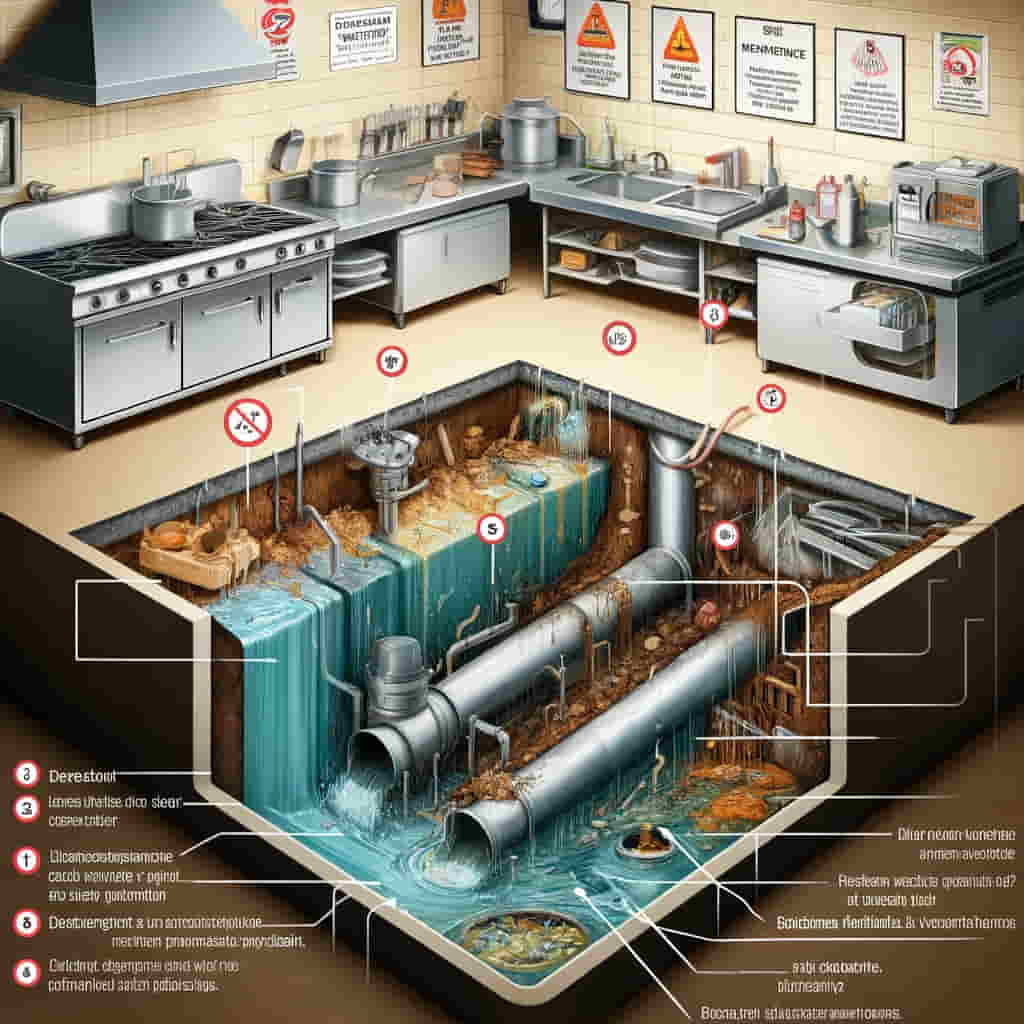
Grease traps play a crucial role in maintaining the functionality of commercial kitchens and food service establishments. However, without proper maintenance and care, grease traps can encounter various problems that can disrupt operations and lead to costly repairs. In this article, we’ll explore some of the common grease trap problems encountered by businesses and discuss preventive measures to keep them functioning efficiently. Additionally, we’ll delve into the importance of choosing a reliable grease trap cleaning service and how they can help mitigate these issues.
Understanding Grease Traps
Before delving into the problems and solutions, it’s essential to understand the role of grease traps in commercial kitchens. Grease traps, also known as grease interceptors, are plumbing devices designed to intercept most greases and solids before they enter wastewater disposal systems. They prevent fats, oils, grease (FOG), and other substances from clogging sewer lines, causing backups, and harming the environment.
Common Grease Trap Problems
Clogging and Blockages
One of the most prevalent issues with grease traps is clogging and blockages. Over time, grease, food particles, and other debris can accumulate inside the trap, reducing its efficiency and causing backups in sinks and drains. This can lead to foul odors, slow drainage, and even sewage overflows, posing health hazards and regulatory compliance issues.
Foul Odors
Accumulated grease and food waste in grease traps can emit foul odors, creating an unpleasant environment in commercial kitchens and food service establishments. These odors not only affect the comfort of staff and customers but can also indicate underlying issues with the grease trap that require immediate attention.
Reduced Efficiency
Grease traps that are not properly maintained can experience reduced efficiency in trapping fats, oils, and grease. This can result in more FOG entering the wastewater disposal system, leading to clogs, backups, and potential fines from regulatory authorities.
Corrosion and Structural Damage
Over time, grease traps can corrode and sustain structural damage due to prolonged exposure to acidic substances, high temperatures, and mechanical stress. Corrosion weakens the integrity of the trap, increasing the risk of leaks, ruptures, and environmental contamination.
Preventive Measures
Regular Maintenance
The key to preventing grease trap problems is regular maintenance. Establish a routine maintenance schedule and ensure that grease traps are cleaned and serviced at least every 90 days, or more frequently if required by local regulations. Regular maintenance helps prevent clogs, odors, and structural damage, prolonging the lifespan of the grease trap.
Proper Disposal Practices
Train kitchen staff to dispose of FOG properly by scraping plates, pots, and utensils before washing them. Implement best practices for grease disposal, such as using strainers and grease collection containers to capture FOG before it enters the drainage system. Educate employees about the importance of maintaining grease traps and complying with regulations to prevent environmental pollution.
Use of Biological Additives
Consider using biological additives in conjunction with regular cleaning to enhance the efficiency of grease traps. Biological additives contain naturally occurring bacteria and enzymes that break down organic matter, reducing odors, preventing clogs, and improving overall performance. Consult with a professional grease trap cleaning service to determine the appropriate additives for your specific needs.
Inspections and Repairs
Conduct regular inspections of grease traps to identify any signs of damage, corrosion, or wear and tear. Address any issues promptly to prevent them from escalating into costly repairs or replacements. Work with certified professionals who specialize in grease trap maintenance and repair to ensure that the job is done safely and effectively.
Choosing a Reliable Grease Trap Cleaning Service
When selecting a grease trap cleaning service, it’s essential to consider several factors to ensure that you’re partnering with a reputable and reliable provider. Here are some tips for choosing the right grease trap cleaning service for your business:
Experience and Expertise
Look for a grease trap cleaning service with years of experience and a proven track record of delivering high-quality services. Choose a company that employs trained technicians who are knowledgeable about grease trap maintenance, cleaning techniques, and regulatory requirements.
Certifications and Compliance
Verify that the grease trap cleaning service is certified and licensed to operate in your area. Ensure that they comply with local regulations and environmental guidelines for grease trap cleaning and disposal. Ask for documentation of certifications and regulatory compliance to demonstrate their commitment to quality and accountability.
Customer Reviews and References
Read online reviews and testimonials from previous customers to gauge the reputation and reliability of the grease trap cleaning service. Ask for references from other businesses in your industry and inquire about their experiences with the service provider. Choose a company with positive reviews and satisfied customers to ensure a positive experience.
Flexible Service Options
Select a grease trap cleaning service that offers flexible service options tailored to your business’s needs and schedule. Whether you require weekly, monthly, or on-demand cleaning services, choose a provider that can accommodate your requirements and provide timely and efficient service when needed.
Transparent Pricing and Contracts
Request detailed pricing information and contracts from potential grease trap cleaning service providers. Ensure that there are no hidden fees or unexpected charges and that the terms of the agreement are clearly outlined. Choose a company that offers transparent pricing and flexible contract terms to avoid any misunderstandings or disputes.
In conclusion, grease trap problems can disrupt the operations of commercial kitchens and food service establishments, leading to costly repairs, regulatory fines, and environmental pollution. By implementing preventive measures and partnering with a reliable grease trap cleaning service, businesses can mitigate these issues and ensure the efficient operation of their grease traps. Remember to prioritize regular maintenance, proper disposal practices, and choosing a reputable service provider to keep your grease traps functioning smoothly and compliant with regulations.
Space-Saving Solutions: Why Side Return Extensions Are Ideal for Urban Homes

Living in an urban area comes with many benefits, such as access to amenities and public transport. However, it also means limited space, especially in older homes built decades ago when families were smaller. As housing costs continue rising in cities like London, families are looking for ways to maximize their existing space rather than move farther out. One excellent solution is adding a side return extension.
What is a Side Return Extension?
A side return refers to the space between a house and the boundary line on one side. It is a small area next to the main building. A side return extension builds out from the house into this narrow area to create a new room.
Side returns are common in Victorian terraced houses and other urban homes built in the late 1800s or early 1900s. Many have 10-15 feet or 3-5 metres of unused land on one side. Adding an extension into this unused area can add valuable living space without the high costs of a full-scale renovation or move.
Benefits of Side Return Extensions
There are many excellent reasons side return extensions are an ideal space-saving solution for urban families in the UK:
1. Add Extra Room
The most obvious benefit is gaining an extra room, which can serve many functions. Popular options are expanding the kitchen, adding a downstairs bathroom, creating a playroom for kids, or building an additional bedroom. Even a modest 8 feet x 10 feet or 3 metres x 2 metres extension can make a noticeable difference. The expanded footprint provides a more usable interior floor area.
2. Increase Property Value
Adding living space naturally boosts a home’s resale value in the UK housing market. Recent data shows the average cost of side return extension in London is between £25,000 to £50,000, but adds £90,000 to £140,000 to the property value. That’s a significant return on investment for homeowners.
3. Bring in More Natural Light
Many older urban homes suffer from limited natural light, especially in the middle rooms. A side return extension can change this by creating wider windows or adding more windows along the new exterior wall. More daylight makes rooms feel more open and inviting.
4. Enhance Layout and Flow
The fixed layouts of many aging urban homes aren’t ideal for modern families. A strategic extension creates opportunities to improve how rooms connect to each other. For example, moving the kitchen into a side extension may open space for a ground-floor bathroom or larger open-plan family room.
5. Use Dead Space
A narrow side return strip often turns into wasted space. An extension allows homeowners to capitalize on this dead zone and turn it into the valuable living area. Even an extra 3 feet or 1 metre creates a usable new room.
6. Add Storage
Finally, gaining additional space in a small urban home provides more storage capacity. Built-in cabinetry and closets are easily added into a side return extension. This hidden storage helps keep clutter under control.
Design Considerations
Homeowners will want to think about the following design factors when planning a side return extension:
Size
The dimensions of the side return determine the possible size of the extension. Typical extensions range from 8 feet x 10 feet or 3 metres x 2 metres up to 15 feet x 20 feet or 5 metres x 6 metres. Smaller homes may only accommodate a one-storey extension, while larger houses can consider two storeys.
Layout
How will the layout integrate with the existing floor plan? Be sure to locate doors, hallways, and windows to maximize flow. Extending the kitchen or bathroom requires carefully mapping plumbing lines.
Foundations
Most side extensions require extra solid foundations to structurally support the new footprint. This must be dug wider and deeper than the existing foundations.
Roof
Will the extension roof attach to the main house roof, or be completely separate? Coordinate roof lines and angles.
Windows
Add ample windows along the new exterior wall for light. But avoid windows that directly overlook neighbours and cause privacy issues.
Materials
Use materials that match the existing house, such as brick, stone cladding, or siding. Consistent materials give the addition a seamless, integrated look.
Cost
As mentioned previously, side return extensions in London average £25,000 to £50,000. The specific design choices will impact the final cost.
Planning Permission for Side Extensions
Homeowners must obtain planning permission from their local council before starting work on a side return extension in the UK. There are guidelines about maximum size and height. For example, in London, the extension cannot exceed 3 metres if adjoining a house, or 4 metres for a detached or end-of-terrace house.
The planning application requires drawings of the proposed design. Be sure to have clear communication with local planning officers. Most side extensions that fit within guidelines can be approved if designed appropriately.
Finding the Right Builder
Choosing the builder is one of the most important decisions for a successful side return extension project. Look for these traits when evaluating builders:
Experience: Seek examples of previous side extensions and talk to past clients. Look for expertise specifically with urban homes.
Quality: The builder should have a reputation for high-quality work and use of good materials. Quick and cheap construction often results in problems down the road.
Communication: A builder who listens to your needs and keeps you informed throughout the process makes the experience smoother.
Fair pricing: Get quotes from a few recommended builders and compare. Be wary of prices that seem too good to be true.
Timeliness: Make sure they can dedicate adequate project management and workers to complete the extension in a reasonable timeline.
Proper certification: They must have all required building permits and certifications.
Take time to carefully research and choose the right builder for your side return extension. This improves the likelihood of an end result you are satisfied with.
Conclusion
For families needing more usable space in their urban homes, a side return extension offers a convenient and cost-effective solution. Homeowners gain valuable living area by utilizing the unused side return area adjacent to their home. A well-designed extension seamlessly blends with the existing layout. It brings benefits like more natural light, enhanced interior flow, added storage, and increased property value – all without the high cost of moving. With proper planning permission and an experienced builder, a side return extension can help maximize your enjoyment of city living.
How to Estimate and Plan Your Loft Conversion Costs

As the need for more space grows, homeowners in the United Kingdom are increasingly turning to loft conversions as a viable solution. A well-executed loft conversion not only adds functional space to your home but can also significantly increase its value. However, the path to a successful loft conversion is paved with careful planning and a thorough understanding of the associated costs. In this guide, we will walk you through the essential steps to estimate and plan your loft conversion costs, with a particular focus on the unique considerations in London.
1. Understanding the Basics of Loft Conversion Costs
Before delving into the intricacies of estimating costs in the vibrant city of London, it’s crucial to grasp the fundamental elements that contribute to loft conversion expenses. These typically include design and planning fees, structural alterations, materials, labor, and finishing touches. According to a study by the Royal Institution of Chartered Surveyors (RICS), the average cost for loft conversion in the UK is around £30,000 to £50,000, with variations based on location, size, and specifications.
2. Location Matters: Cost for Loft Conversion in London
London, with its dynamic property market and unique architectural landscape, presents its own set of challenges and opportunities when it comes to loft conversions. The cost for loft conversion in London tends to be higher than the national average due to factors such as increased demand, limited space, and stricter building regulations. According to a report by the National Building Specification (NBS), the average cost for a basic loft conversion in London ranges from £40,000 to £60,000. However, bespoke or high-end projects can surpass £100,000.
3. Factors Influencing London Loft Conversion Costs
a. Planning Permission and Building Regulations:
The first step in any loft conversion project is obtaining the necessary permissions. In London, where heritage and conservation areas abound, securing planning permission can be a complex and time-consuming process. Additionally, complying with stringent building regulations is imperative. The cost for loft conversion in London may include fees for planning applications and building control inspections.
b. Architectural Design:
Collaborating with an architect is essential for a successful loft conversion. Their expertise in maximizing space while adhering to regulations can influence the overall cost. Architectural fees in London may range from 5% to 15% of the total project cost.
4. Navigating Material Costs in the Capital
The cost of materials constitutes a significant portion of the overall budget for a loft conversion. In London, where construction costs are generally higher than in other parts of the UK, homeowners need to carefully consider the selection of materials. While quality should not be compromised, exploring cost-effective options without compromising safety and durability is essential. Consulting with a structural engineer can provide insights into suitable materials that meet both aesthetic and budgetary requirements.
5. Labour Costs: Skilled Craftsmanship Comes at a Price
The skilled labor required for a loft conversion project is a critical component of the overall cost. In London, where experienced and reputable builders may charge premium rates, it’s crucial to obtain multiple quotes and thoroughly vet potential contractors. Keep in mind that cutting corners on labor costs can result in subpar workmanship and additional expenses down the line. According to a survey by the Federation of Master Builders (FMB), the average daily rate for a tradesperson in London is significantly higher than the national average.
6. Hidden Costs: Contingency Planning for Unforeseen Expenses
No matter how meticulously you plan, unforeseen circumstances can arise during a loft conversion project. It’s advisable to allocate a contingency fund of at least 10% to 15% of the total budget to cover unexpected expenses. This can include structural issues, plumbing or electrical challenges, or modifications required to meet changing specifications. Being prepared for the unexpected is a key element in ensuring the smooth progression of your loft conversion.
Conclusion: A Worthwhile Investment in Your Home
Estimating and planning your loft conversion costs in London requires a strategic approach and careful consideration of the unique factors influencing the market. By understanding the basics, navigating through location-specific challenges, and accounting for various cost components, you can embark on a loft conversion project that not only enhances your living space but also adds significant value to your property. Remember, a well-executed loft conversion is not just an investment in your home; it’s an investment in your lifestyle and the future value of your property.
Troubleshooting Common Issues with Grit Traps: How to Ensure Optimal Performance
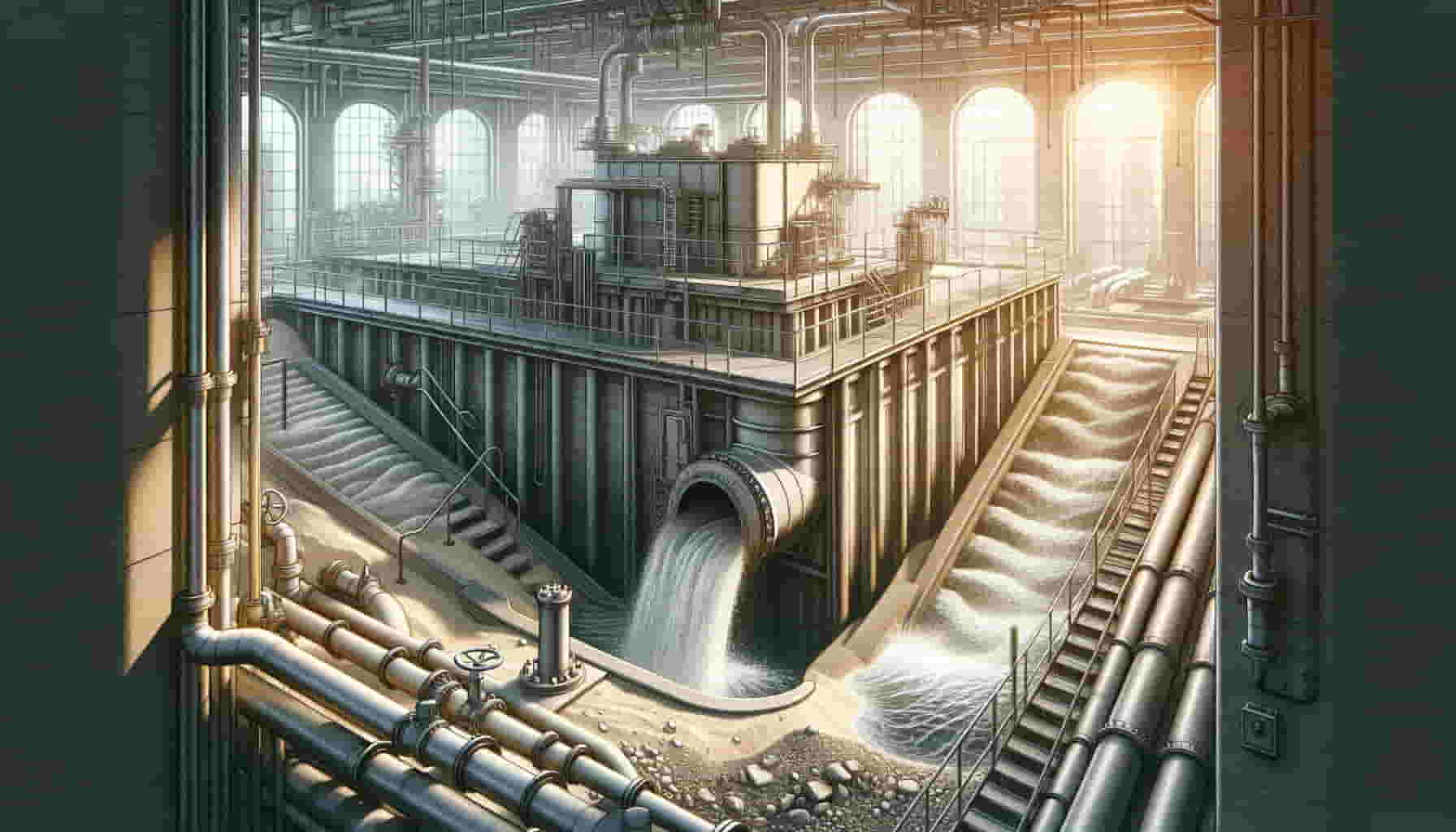
Grit traps are essential components of commercial kitchen drainage systems, designed to capture and retain solid particles, grease, and other contaminants before they enter the main sewage system. These devices play a crucial role in maintaining a clean and efficient kitchen operation, preventing costly blockages, and protecting the environment from harmful pollutants. However, like any mechanical system, grit traps can encounter various issues that may affect their performance. In this article, we’ll explore some of the most common problems associated with grit traps and provide practical solutions to ensure their optimal performance.
Understanding Grit Trap Basics:
Before diving into troubleshooting, it’s essential to understand the fundamental working principles of grit traps. These devices consist of a concrete or plastic tank with multiple chambers, each designed to trap different types of waste. The first chamber, known as the sediment trap, captures heavy solids, such as sand, soil, and other debris. The second chamber, called the grease trap, retains fats, oils, and grease (FOG) by allowing them to cool and solidify. Finally, the third chamber, or effluent trough, collects any remaining contaminants before the wastewater exits the system.
Common Grit Trap Issues and Solutions:
Clogged Inlets and Outlets:
One of the most common grit trap problems is clogged inlets and outlets, which can significantly reduce the flow of water and lead to backups or overflows. Clogs can occur due to the accumulation of food debris, grease buildup, or improper maintenance.
Solution: Regular inspection and cleaning are essential to prevent clogs. Establish a cleaning schedule based on the volume of use and follow the manufacturer’s recommendations for safe and effective cleaning methods. Additionally, consider installing strainers or screens to catch larger particles before they enter the grit trap.
Odor Problems:
Unpleasant odors emanating from grit traps can be a major nuisance and a sign of deeper underlying issues. Odors can result from the buildup of organic matter, inadequate maintenance, or a lack of proper ventilation.
Solution: Address odor problems by ensuring regular cleaning and proper ventilation. Install a vent pipe to allow air circulation and prevent the accumulation of foul-smelling gases. Consider using deodorizing agents or bacterial treatments designed specifically for grit traps to help break down organic matter and neutralize odors.
Grease Buildup:
Grease buildup is a common issue that can significantly reduce the efficiency of grit traps. Over time, grease can solidify and accumulate in the trap, leading to clogs, backups, and decreased flow.
Solution: Implement a comprehensive grease management program that includes regular cleaning, the use of biological or enzymatic grease-degrading agents, and employee training on proper grease disposal practices. Ensure that all kitchen staff understands the importance of minimizing grease discharge and the proper techniques for scraping plates and disposing of grease before washing dishes.
Corrosion and Structural Damage:
Grit traps are subjected to harsh conditions, including exposure to acidic and alkaline substances, which can lead to corrosion and structural damage over time. Cracks, holes, or deterioration of the trap’s material can compromise its effectiveness and pose environmental risks.
Solution: Conduct regular inspections to identify signs of corrosion or structural damage. If issues are detected, consider replacing the affected components or the entire grit trap. Choose corrosion-resistant materials, such as fiberglass or high-density polyethylene (HDPE), for new installations or replacements.
Overflows and Backups:
Overflows and backups can occur when the grit trap becomes overwhelmed by the volume of wastewater, solids, or grease. These issues can lead to flooding, unsanitary conditions, and potential health hazards.
Solution: Ensure that the grit trap is sized appropriately for the volume of wastewater generated by your kitchen. Consider upgrading to a larger or more efficient model if necessary. Additionally, implement a regular cleaning schedule to prevent excessive buildup of solids and grease, which can contribute to overflows and backups.
Ensuring Optimal Grit Trap Performance:
Maintaining the optimal performance of grit traps requires a comprehensive approach that involves regular cleaning, proper maintenance, and employee education. Consider the following best practices:
Develop a Cleaning Schedule: Establish a cleaning schedule based on the volume of use and the manufacturer’s recommendations. Regular cleaning is essential to prevent clogs, odors, and buildup.
Train Employees: Educate kitchen staff on the importance of proper grease disposal, scraping plates, and minimizing the discharge of solids into the drainage system. Proper employee training can significantly reduce the burden on grit traps and extend their lifespan.
Conduct Regular Inspections: Perform regular inspections to identify any issues, such as clogs, structural damage, or excessive buildup of solids or grease. Early detection can prevent more significant problems from developing.
Hire Professional Services: Consider working with professional grit trap cleaning and maintenance companies to ensure that your traps are serviced correctly and efficiently. These companies have the expertise and equipment to handle even the most challenging grit trap issues.
Follow Regulations: Familiarize yourself with local regulations and guidelines regarding grit trap maintenance and disposal. Ensure that your grit trap system complies with all relevant environmental and health codes to avoid fines or legal issues.
Conclusion:
Grit traps play a vital role in protecting the environment and maintaining efficient kitchen operations. By understanding common issues and implementing practical solutions, you can ensure that your grit traps perform optimally, preventing costly blockages, backups, and potential environmental hazards. Regular maintenance, employee training, and professional services are key to keeping your grit traps in top condition and ensuring compliance with all applicable regulations. By addressing problems promptly and following best practices, you can prolong the lifespan of your grit traps and maintain a clean, safe, and efficient kitchen environment.
Ultimate Guide to Planning a Kitchen Extension: Tips and Ideas

Are you considering a kitchen extension? With so many options available, it can be difficult to know where to start. From deciding where to place your addition, budgeting considerations, and finding inspiration for the overall design; planning a kitchen extension can feel daunting. That’s why we have created this ultimate guide – packed with tips and ideas to help simplify the process and make sure that you get exactly what you want out of your new space!
Establish Your Budget – Factors to consider before investing in a kitchen extension
Investing in a kitchen extension can be a significant undertaking, and establishing your budget is an essential first step. Before jumping in, it’s important to consider all the factors involved to ensure you make the most of your investment. In London, kitchen extensions are a popular way for homeowners to expand their living space without having to move. As you set your budget, think about the size and scope of the extension you want, the materials you’ll need, and any additional costs, such as planning permission or permits. With careful planning and a clear understanding of all the expenses involved, your kitchen extension can add value and enjoyment to your home for years to come.
Select the Right Design for Your Home – Options and ideas to make your kitchen look great
Designing the ideal kitchen can be a challenging task for any homeowner. With so many options available to choose from, it can be overwhelming to know where to start. Fortunately, by considering a few key ideas, you can create a beautiful and functional kitchen that meets all your requirements. One of the most popular remodeling trends in London is kitchen extensions. They allow you to increase the size of your cooking space while adding more natural light and space to move around. Along with kitchen extensions, other designs such as open concept layouts, sleek cabinets, and modern appliances are perfect for creating a stylish and practical cooking space. Remember, the right kitchen design should not only look great but also fit your lifestyle and budget.
Choose the Best Materials – Tips for selecting materials that will last and fit within budget
When it comes to kitchen extensions in London, selecting the right materials can make all the difference. You want to choose materials that will not only fit within your budget but will also last for years to come. One important consideration is the durability of the materials. You don’t want to skimp on quality and end up having to replace things sooner than you’d like. Another key factor is style. Your kitchen extension should be an extension of your home and personal style, so you want to select materials that complement your existing decor. With these tips in mind, you’ll be well on your way to creating a functional and beautiful kitchen extension that will stand the test of time.
Consider Hiring Professional Help – Benefits of having an expert help plan and design your kitchen extension
If you’re considering a kitchen extension in London, hiring a professional to help with the planning and design could save you time, money, and a lot of headaches. Not only will an expert have a wealth of knowledge and experience to draw upon, but they’ll also be able to take your ideas and turn them into a cohesive and functional design. They can also help ensure that your extension meets all necessary regulations and requirements, and can even assist with selecting the best materials and finishes to suit your style and budget. Overall, investing in professional help for your kitchen extension project can result in a smooth and successful process, and a stunning new space to enjoy for years to come.
Research Building Regulations – What you need to know about building regulations before starting construction
Before starting construction on a kitchen extension in London, it is important to understand the building regulations that apply. These regulations are in place to ensure that buildings are safe for both occupants and the public. They cover every aspect of a construction project from design to completion. It is crucial that you obtain the necessary permits and approvals before beginning any work on your kitchen extension. Failure to do so can result in fines, delays, or even the demolition of your building. Knowing and adhering to building regulations can ensure that your kitchen extension in London is constructed according to legal and safety standards, while also avoiding any costly mistakes. So, research building regulations thoroughly before starting your kitchen extension project.
Plan Ahead for Appliances & Fixtures – Ideas for finding affordable yet stylish options
When it comes to planning for appliances and fixtures in your kitchen extension in London, affordability and style are key factors to consider. Luckily, there are many options available that won’t break the bank but will still make your kitchen look chic and inviting. One idea is to explore second-hand stores or online marketplaces like eBay or Craigslist for gently used appliances and fixtures. You can also consider purchasing discontinued or overstocked items from big-box stores or shopping during clearance sales. Another option is to go with a minimalist or industrial style, which often uses low-cost materials like concrete and raw wood for a sophisticated look. With a little creativity and some strategic shopping, you can have the stylish kitchen extension of your dreams without sacrificing your budget.
Completing a kitchen extension project in London will be an exciting yet challenging process. Researching the pricing and design of your potential kitchen extension can help you avoid going over budget. It is also important to consider hiring a professional who can help you with both the planning and actual building of the new kitchen. By valuing quality materials, understanding local building regulations, and planning finance for appliances & fixtures, homeowners can position themselves for success in their kitchen extension project. With thoughtful consideration and patience, any homeowner can have the perfect kitchen that they have always desired! Additionally taking advantage of deals offered by companies offering kitchen extensions in London can further simplify and improve the outcome of your project.
Common Grit Trap Problems and How to Solve Them Effectively

Grit traps are an important part of the plumbing in any commercial and industrial building, but they can be prone to a number of common issues. From stubborn blockages and debris build-up to broken parts or improper installation, there’s plenty that could go wrong with your grit trap. In this article, we’ll discuss some of the most frequent issues associated with grit traps as well as ways for you to effectively repair them and get them up-and-running again in no time!
Introducing Grit Traps and Their Purpose
Grit traps, also known as sedimentation tanks, play a vital role in wastewater treatment facilities. These traps are designed to remove sediment and other debris from the wastewater stream before it continues on to further treatment processes. The primary purpose of grit traps is to protect downstream equipment by preventing clogging and damage caused by abrasive particles. By removing grit and other solids, the wastewater treatment process operates more efficiently, thus improving the overall quality of the treated water. Grit traps vary in size depending on the flow rate of the wastewater they receive. They can be constructed as a standalone unit or integrated into larger treatment systems. Though often overlooked, grit traps play a critical role in ensuring that wastewater is effectively treated and discharged into the environment.
Common Causes of Clogging in Grit Traps
Grit traps play an important role in wastewater treatment facilities by removing heavy solids, such as sand and gravel, from the incoming wastewater. However, grit traps can face clogging issues due to the accumulation of these solids. Some of the common causes of clogging in grit traps include inadequate sizing, low flow rates, and poor maintenance. Inadequately sized grit traps with insufficient detention time may result in incomplete sedimentation, causing clogging downstream. Low flow rates also increase the likelihood of clogging, as the solids settle and build up without being carried away. Poor maintenance and cleaning can exacerbate clogging issues and lead to costly repairs. Therefore, it is crucial to identify and address these causes early on to ensure efficient and effective wastewater treatment processes.
Signs of a Clogged Grit Trap
Grit traps are an essential component of any wastewater treatment system. As water flows through these structures, they capture sediment and debris that could otherwise damage downstream equipment. However, over time, grit traps can become clogged, reducing their efficiency and putting extra strain on the system. There are several signs that your grit trap may need cleaning, including an increase in wastewater turbidity, foul odors, or visible sediment buildup. If you notice any of these indicators, it is crucial to take action promptly to avoid more severe problems down the line. Regular maintenance and cleaning of your grit trap can help ensure that your wastewater treatment system operates smoothly and effectively.
Steps to Take Before Cleaning a Grit Trap
Maintaining a grit trap is essential to prevent clogs and unnecessary downtime. However, it’s crucial to take certain steps before diving into cleaning it. First and foremost, ensure your safety by wearing protective gear, such as goggles and gloves. Then, turn off any equipment and isolate the trap to avoid any accidental discharge. Once you’re ready to proceed, remove all solid debris and dispose of it properly. Be thorough in your cleaning by using a pressure washer or a hose to flush out any remaining solids. Finally, inspect the trap for any repairs or replacements needed before putting everything back in place. Taking these steps will guarantee a successful and safe grit trap cleaning process.
Different Cleaning Methods for Grit Traps
Grit traps are an essential part of ensuring the smooth functioning of any wastewater treatment facility. The accumulation of debris, organic waste, and grit within these traps, however, can lead to clogs and blockages that can severely disrupt the normal flow of wastewater. To mitigate this, there are various cleaning methods that can be employed, ranging from manual methods to automated ones. Among the most effective are techniques such as pumping, vacuuming, and pressure washing. Each method has its advantages and disadvantages, and deciding which one to use will depend on factors such as the amount of debris and grit to be removed, the size and type of the grit trap, and the available resources. Proper cleaning of grit traps not only ensures smooth operations but also helps in meeting regulatory compliance and maintaining high levels of safety.
Tips To Help Prevent Clogs in the Future
Clogs are an unfortunate reality of any home with plumbing. They can cause extensive damage, be expensive to fix, and prevent you from going about your daily activities. Fortunately, there are several tips you can use to help prevent clogs in the future. Some of the easiest tips include avoiding pouring grease or fats down the drain, using a drain catcher or strainer to prevent hair and other materials from going down the drain, and being careful about what you flush down the toilet. Another important tip is to be aware of what items your plumbing can and cannot handle. Following these tips can go a long way in keeping your plumbing functioning smoothly and free from clogs.
In conclusion, grit traps play an essential role in protecting municipal wastewater systems from damage caused by clogs. It is important to be aware of the common causes of clogging so that you can do what you can to reduce it from happening in the first place. Additionally, by knowing the warning signs of a blocked trap as well as the steps to take before starting to clean the trap, you can save yourself time and hassle in dealing with its maintenance. And finally, when a parsimonious cleaning approach is taken on a regular basis for grit traps, there are fewer chances of major blockages or backups occurring in the future. Get in touch with experts to clean your grit traps.
Essential Components of an Indoor Hydroponic Garden Setup

In recent years, the concept of an indoor hydroponic garden has gained immense popularity among urban dwellers and gardening enthusiasts alike. These innovative setups offer a sustainable and efficient way to grow fresh produce right in the comfort of one’s home or office. But what exactly goes into setting up a successful indoor hydroponic garden?
Understanding An Indoor Hydroponic Garden: Beyond Soil
At its core, an indoor hydroponic garden is a method of growing plants without soil, using a nutrient-rich water solution instead. This innovative approach allows for greater control over the plant’s environment, leading to faster growth and higher yields. By eliminating soil, gardeners can avoid many common pests and diseases that typically plague traditional gardens. Additionally, hydroponic systems are often more water-efficient, recycling water continuously, and reducing the overall consumption. But, what do you need to set up an efficient indoor hydroponic garden?
Hydration and Nutrition: The Lifeline of Hydroponics
Water and nutrient solution plays a pivotal role. In an indoor hydroponic garden, plants draw their nutrients directly from the water. This means the quality of the water and the balance of the nutrient solution are paramount to the health and productivity of the garden. Additionally, it’s noteworthy that an indoor hydroponic garden’s reliance on this nutrient-rich water solution contributes significantly to water conservation, using a remarkable 90% less water than traditional soil-based gardening methods.
Shedding Light on Growth: The Role of Lighting
Lighting is another essential component. Plants require light to photosynthesize and grow. In an indoor hydroponic garden setup, natural sunlight might be scarce or inconsistent. This is why artificial lighting, such as LED grow lights, becomes vital to ensure plants receive the right amount of light when in an indoor environment.
Modern Farming: The Age of Automation
Last but not least, modern indoor hydroponic gardens often incorporate advanced control systems, standing out as examples of technological evolution. These state-of-the-art systems are designed to take the guesswork out of gardening. With features like smart sensors and Wi-Fi connectivity, they can continuously monitor the garden’s environment, adjusting settings in real-time to maintain ideal growth conditions, ensuring that gardeners can manage their crops from anywhere, anytime. Their optimized LED lighting ensures plants receive the right amount of light, regardless of external conditions. Furthermore, some of these systems are equipped to provide timely alerts, such as when it’s time to harvest or if there’s a change in nutrient levels. This level of automation not only simplifies the gardening process but also ensures that plants receive consistent care, leading to healthier crops and higher yields. In essence, with these smart systems, an indoor hydroponic garden is not just automated but also more connected and responsive than outdoor methods.
Diverse Choices with Seed Pods in Hydroponic Systems
One of the standout features of a modern indoor hydroponic garden is the use of seed pods. These pods, offering a selection of several diverse crops, are meticulously designed to provide an optimal environment for seeds to germinate and sprout. Whether you’re looking to grow butter lettuce, shiso, Portuguese kale, chamomile, or any of the other numerous options, there’s a seed pod tailored for it. Pre-packed with the right amount of nutrients and a growth medium, they eliminate the need for soil, ensuring a cleaner and more efficient planting process. The convenience of seed pods also means that users can easily switch between different crops without the hassle of traditional planting. Once inserted into the hydroponic system, these pods receive the perfect balance of water, light, and nutrients, ensuring robust and healthy plant growth. Moreover, the use of seed pods reduces the chances of contamination from soil-borne diseases, making them a safer choice for indoor gardening.
Setting up an indoor hydroponic garden can be a rewarding experience, offering fresh produce year-round. While there are several components to consider, these systems make the growing process seamless and straightforward. If you’re considering starting your own indoor hydroponic garden, there’s no better time than now. With smart technology leading the way, you’re sure to have a thriving garden in no time at all. Are you ready to embark on your hydroponic journey?
Essential Indoor Gardening Supplies and Tools You Need

In recent years, indoor gardening has gained significant popularity among both novice and experienced gardeners. Creating a thriving indoor garden can bring a touch of nature and a sense of tranquility to your living space, regardless of whether you live in a spacious house or a cozy apartment. However, to ensure your plants flourish, you need the right supplies and tools at your disposal. Luckily, indoor growing systems make growing greens, edible flowers, and herbs simple and easy.
Indoor Gardening Supplies
In order to be successful with traditional indoor gardening, you will need a number of tools and supplies. Automated growing systems aim to make growing indoors as simple as possible and most of these tools are not required for these growing systems. But if you are planning on growing outside of one of these systems, you will probably need the following:
- Plant Containers and Pots
Opt for containers with proper drainage to prevent overwatering, which is a common issue in indoor gardening. You can choose from a variety of materials such as ceramic, terracotta, plastic, and fabric pots. Each has its benefits, so consider your specific plants’ needs and your aesthetic preferences.
- Potting Mix and Soil Amendments
There are specialized potting mixes available for various types of plants, such as succulents, herbs, and tropical plants. Additionally, soil amendments like perlite and vermiculite can improve drainage and water retention, promoting healthy root growth.
- Lighting Systems
Indoor plants rely on artificial light sources, especially when natural light is limited. High-quality grow lights are a must-have for your indoor garden. Depending on your plant selection, you might need different light intensities and durations, so research your plants’ light requirements thoroughly.
- Watering Can or System
Proper watering is crucial for the well-being of your indoor plants. A watering can with a narrow spout allows for controlled watering, preventing soil erosion and waterlogging. Alternatively, you can opt for automated watering systems with timers.
- Pruning and Trimming Tools
Invest in a pair of sharp and sturdy gardening shears for cutting away dead leaves, shaping plants, and encouraging new growth. Pruning also helps prevent pests and diseases from spreading.
- Humidity Trays and Misters
To enhance humidity levels around your plants, consider using humidity trays filled with water and placing them nearby. You can also use a fine misting spray to mimic a tropical environment, which is especially beneficial for orchids and ferns.
- Plant Fertilizers
Choose a balanced liquid fertilizer or slow-release granular fertilizer to provide essential nutrients that might be lacking in the potting mix. Be sure to follow the recommended dosage instructions to avoid over-fertilization.
Creating a lush and vibrant indoor garden requires a number of supplies and a certain amount of knowledge in order to be successful. That’s why selecting a simple plug-and-grow indoor garden system that allows you to have beautiful, nutritious, and convenient home-grown greens, without the need for all the extra tools and supplies, is an excellent choice.
How to Ensure Your Septic Tank is Operating at Maximum Efficiency

Are you the proud owner of a septic tank, but unsure how to best care for it? It can seem like a daunting task, especially when the last thing on your mind is dealing with excess waste. However, properly taking care of your septic tank is essential for keeping your home running at maximum efficiency. This blog post will help home owners understand the importance of regular maintenance and when to call in professionals for assistance so that they can ensure their septic tank operates efficiently and avoid any unnecessary repairs or costly replacements down the line.
Understand how your home septic system works
If you own a home with a septic system, understanding how it works is crucial. Unlike a municipal sewer system, your septic system operates within the confines of your property. Essentially, your septic tank separates solids and oils from wastewater before eventually dispersing them back into the surrounding soil. To ensure your system stays in proper working order, you’ll need to consult with professionals regularly to pump your septic tank and avoid potential issues. With the right knowledge and maintenance, your home’s septic system can serve you and your family for many years to come.
Learn the signs of a septic tank that needs to be pumped
If you’re a homeowner with a septic system, it’s important to know when your tank needs to be pumped. The signs of a full tank can range from slow drains to bad smells to even sewage backups. Ignoring these signs can lead to costly repairs and even health hazards. That’s why it’s always best to consult professionals for pumping your septic tank. They have the experience and equipment necessary to safely and effectively remove waste from your system. By regularly maintaining your septic system, you can avoid more serious issues down the line and ensure the health and safety of your family and community.
Identify when you need to hire professional help for pumping
Pumping is a crucial element of maintaining good health for your household. Regular pumping ensures that your septic tank operates efficiently, thereby preventing potential health hazards. But how do you know when it’s time to call in the professionals? A telltale sign is when you notice slow draining or backup in your sinks, bathtubs, or toilets. This is an indication that your septic system is full, and it’s time to pump it. Other signs include odors and standing water near your drain field. It’s vital to act fast and hire professional help to avoid the unpleasant and costly consequences of a mishandled septic system.
Perform regular maintenance on your septic tank to prevent costly repairs
Did you know that neglecting regular maintenance on your septic tank could lead to expensive repairs? Your septic system plays a crucial role in keeping your home’s plumbing functioning properly. It’s responsible for removing wastewater, separating it into liquids and solids, and distributing it safely into the soil. Without proper maintenance, your septic tank can become clogged and even fail, leading to costly repairs. By performing regular maintenance on your system, you can prevent this from happening and ensure your septic tank runs efficiently for years to come. Don’t wait until it’s too late, schedule a maintenance appointment with a professional today!
Ensure proper sewage disposal in order to maintain a healthy ecosystem
The health of our planet and its inhabitants relies greatly on ensuring proper sewage disposal. As our population grows and cities become more densely populated, it is increasingly important to prioritize the responsible treatment of wastewater and sewage. Just as we take care to properly dispose of our household garbage, we must also take care to properly dispose of our wastewater. Failing to do so can have disastrous consequences for the environment and the many species that call it home. From polluting our waterways to contributing to the spread of disease, the impacts of improper sewage disposal are far-reaching. It is crucial that we recognize our role in maintaining a healthy ecosystem and take the necessary steps to ensure that waste water is effectively treated and disposed of.
Use natural products and solutions to keep your septic tank clean and functioning properly
Maintaining a healthy septic system is crucial to ensuring comfortable and safe living conditions. While we may not often think about it, our septic tanks require regular maintenance to function properly. Fortunately, keeping a clean septic tank doesn’t always mean resorting to harsh chemicals. There are plenty of natural solutions and products that can help you keep your septic system clean and healthy. From using baking soda and vinegar to breaking up waste to relying on enzyme-based treatments, there are a range of environmentally-friendly and safe options that you can use. By incorporating natural solutions into your septic tank maintenance routine, you can help ensure that your system functions properly for years to come.
In conclusion, understanding how your septic tank works and learning the signs of a tank that needs to be pumped can help you identify when you need to hire professional help for pumping. Additionally, regular maintenance of your tank, combined with using natural products and solutions, can help keep the system functioning properly. It is also important to remember that proper sewage disposal helps maintain a healthy ecosystem. Having a fully functioning septic tank installed and cared for is an absolute must in any home or business. When all else fails, don’t hesitate to consult professionals for pumping your septic tank – without this vital step bad odor and unpleasant surprises could be just around the corner! Take these steps now so you can rest assured that your septic system will keep ticking.









